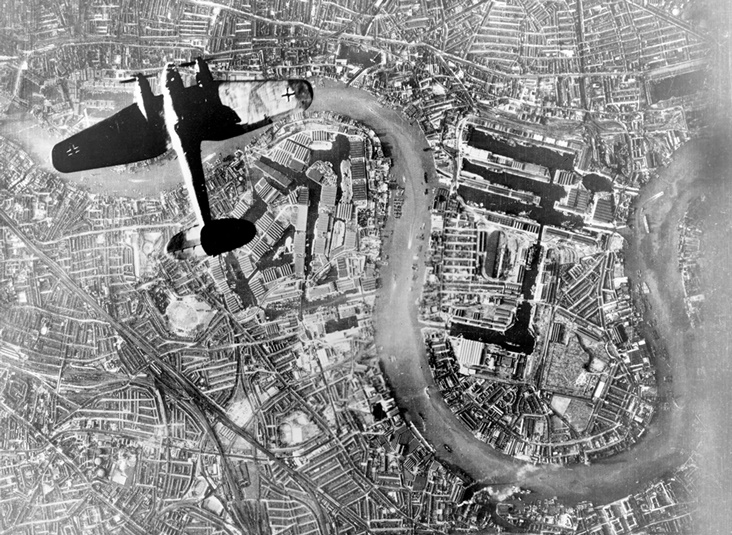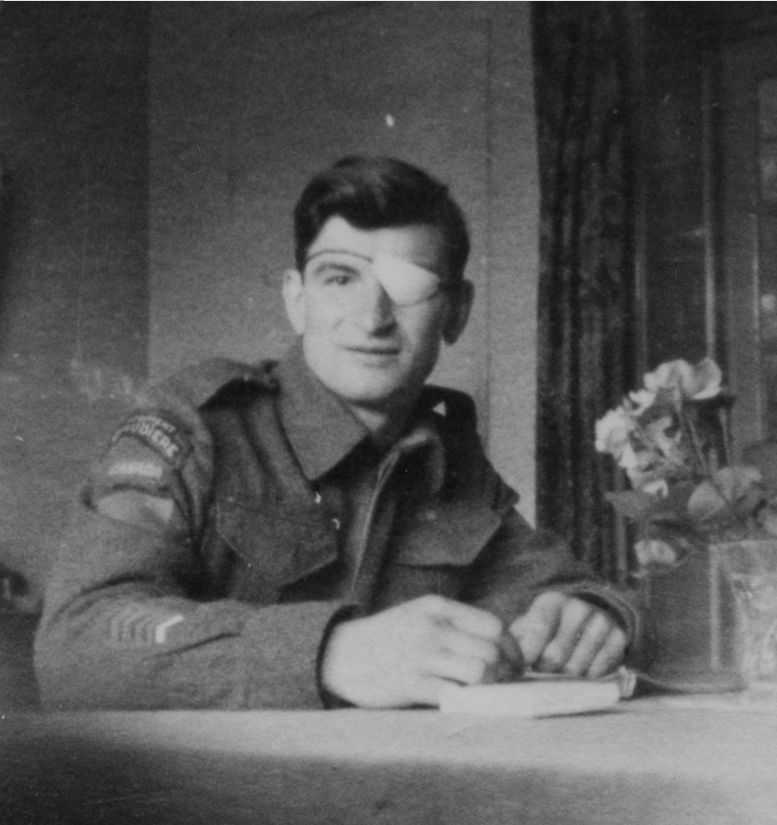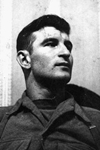When London's Docks Visited the Clyde
The War Illustrated, Volume 9, No. 219, Page 430, November 9, 1945.
One of our most astonishing and successful feats in the countering of the Nazis when Britian had her back to the wall was the partial removal, in the autumn of 1940, of the Port of London to the Clyde Estuary. Official disclosure of details of this great enterprise of "the Port in the Sea" has only recently been made: the following account is compiled from information in the October issue of the Magazine of the Port of London Authority. See also illus. page 166.
After the overthrow of the Low Countries and the fall of France in the early summer of 1940 it was quickly becoming obvious that shipping could make use of London and our other south and east coast ports for very little longer. There was the Luftwaffe. There were the E-boats. There was the magnetic mine. Each and all conspiring to cut us off from world supplies.
A major diversion of shipping to our west coast ports at once suggested itself to the Ministries of Shipping and Transport (later to be combined in the Ministry of War Transport); but it was soon discovered that even working at maximum pressure there ports would be sadly unequal to the vast demands imposed by our ever-growing war-effort. The position indeed seemed grievous. And as the weeks dragged on into later summer it worsened.
Whose was the inspiration we may never know. But it was born. At once plans were put into operation establishing the Clyde Anchorages Emergency Port, a brilliantly-conceived scheme for a vast port at sea in the safely-enclosed waters of the Clyde where British and ocean-bound shipping could anchor, and, without touching land, load and discharge their cargoes overside, with protection afforded by the boom between Dunoon and the Cloch Lighthouse erected at the outbreak of war. Details were worked out with the help of the Port of London Authority's Assistant General Manager, Mr. (now Sir) Robert Letch.
The Clyde Anchorages scheme went into operation almost immediately after the Port of London received its first heavy air attack on September 7, 1940. Within a few days the first stevedoring unit, consisting of London men and gear, proceeded north. The men were billeted in the Greenock and Gourock districts, and within a month totalled some six hundred. They administration was in the hands of Sir Robert Letch, as Executive, and a small staff loaned by the Port of London Authority.
Exactly a week after that heavy Luftwaffe raid on London's docks, the first ship discharged her cargo at "the Port in the Sea". She was the S.S. Nardana, with a general cargo from India. She was the first of the many. The date was September 14, 1940 – a memorable day in the history of this island.
Distribution of cargo to various ultimate destinations involved a highly-skilled degree of planning, for there were no quays or sheds available for housing goods pending instructions. Before each cargo rose from the ship's hold it was necessary to decide its route of consignment. As often happened, cargoes were transhipped direct from ocean vessel into coasters awaiting to hurry them to our home ports.
This scheme had many advantages, including the saving of precious time, and the risks to the cargoes were spread over a much larger number of vessels. Cargoes needed for delivery by rail or road were discharged into a special fleet of power barges, dumb barges and Dutch schuyts, and sailed ashore. Here they were unloaded at emergency wharves – some of them exclusively for passenger use in normal times – by means of small electric cranes and trucks brought all the way from London. The stevedoring was carried out by the London dockers.
In all, some 300 Thames dumb (towed) barges were dispatched to the Clyde, either towed round the coast or carried on the decks of freighters. A fleet of punts was taken by road, as far as the port of Glasgow and there launched. Under the guidance of a lighterage foreman loaned by the P.L.A., local hands from Greenock were trained in the task of handling these craft. And they did it thoroughly. Most of the powered barges were Thames Estuary auxiliary sailing barges, which were moved to the Clyde and operated there by their normal crews. Because of weather conditions they did not make use of their sails but relied on their auxiliary engines. Many of them had earlier in the year, performed gallant service at Dunkirk.
Almost every kind of cargo was unloaded at the Clyde Anchorages. Included among them was bulk grain, and for this the Port acquired portable bucket elevators, operated by an expert P.L.A. grain machinist. When supplies from the U.S. began streaming in, large tonnages of explosives were discharged at remote anchorages in the neighbouring lochs. An even trickier task was the unloading of vast quantities of tanks, tracked and other vehicles and landing craft in sections, with the help of a powerful floating crane.
Discharging Damaged Ships
Rarely was the work of a straightforward nature. And there were always vagaries of the weather to contend with. Frequently ships which had been severly damaged by enemy action while at sea had to be discharged from flooded holds so that repairs could be effected. Of the shattered craft some were so heavily waterlogged that they arrived with too deep a draft to enter any normal port, and thus had to be discharged in deep-water anchorages.
On one occastion men and gear from the Anchorages made an overland journey of some 250 miles to render assistance to the S.S. Staffordshire which, limping badly, had managed to enter Loch Ewe, well north of the Clyde. Another ship carried a cargo of agents had placed bombs timed to explode en voyage – which they did. The whole cargo, on arrival in the Clyde, had to be shot loose into barges, each case being opened on board under the supervision of bomb disposal experts. Another frequent task was the restowing of deck cargoes which had shifted during rough weather in the North Atlantic or on the Murmansk route to Russia.
With the lessening of the Luftwaffe's attacks on the southern and eastern ports, British shipping slowly returned to somethink like normal. But the work of the Clyde Anchorages went on, as a vast terminal for the larger troopships. After America's entry into the war, five of the world's biggest passenger liners – Queen Mary, Queen Elisabeth, Aquitania, Ile de France and Nieuw Amsterdam – operated a regular ferry service between the U.S. and the Clyde Anchorages, transporting hundreds of thousands of American troops for service in Europe. These swift vessels sailed singly, and in addition smaller types of troopships continuously sailed in and out of the "Port" in convoy. The Port authorities grappled skilfully with the prodigious tasks of ferrying the troops ashore and entraining them besides refuelling and storing the ships themselves.
It was from the Clyde, too, that a large part of the fleet engaged in the North Africa landings embarked; from here, also, they sailed in large numbers for Normandy, following D-Day, with the equipment necessary for exploiting the invasion. In all, from September 1940 to its discontinuance at the end of August 1945, the Clyde Emergency Port discharged and loaded 1,885 ships. The cargo discharged and loaded amounted to 2,056,833 tons; while military equipment, stores, mails, and so on discharged and loaded numbered 6,038,872 packages.
 How London Docks looked to the Luftwaffe, revealed in a photograph taken from a Nazi bomber during a daylight raid in the Battle of Britain; Surrey Commercial Docks and the West India and Millwall systems are enclosed in the loop of the Thames known as the Isle of Dogs. Tower Bridge is at the top left. It was the threat of heavy damage to these docks that brought into being the Clyde Anchorages Emergency Port. Photo, British Official.
How London Docks looked to the Luftwaffe, revealed in a photograph taken from a Nazi bomber during a daylight raid in the Battle of Britain; Surrey Commercial Docks and the West India and Millwall systems are enclosed in the loop of the Thames known as the Isle of Dogs. Tower Bridge is at the top left. It was the threat of heavy damage to these docks that brought into being the Clyde Anchorages Emergency Port. Photo, British Official.
Index
Previous article
How the Barham was Lost
It is practically four years since the battleship Barham was lost, yet a full official account of the disaster has still to appear. In the Admiralty account of naval operations from April 1941 to Janu
Next article
Now It Can Be Told! - 'Ghost' Forts Sent to Crash on Heligoland
While the flying-bombs and rockets were crashing on London we were using an 11-ton V-weapon against the Germans. And the Germans who survived this weapon never knew how it worked. I can now reveal (wr





